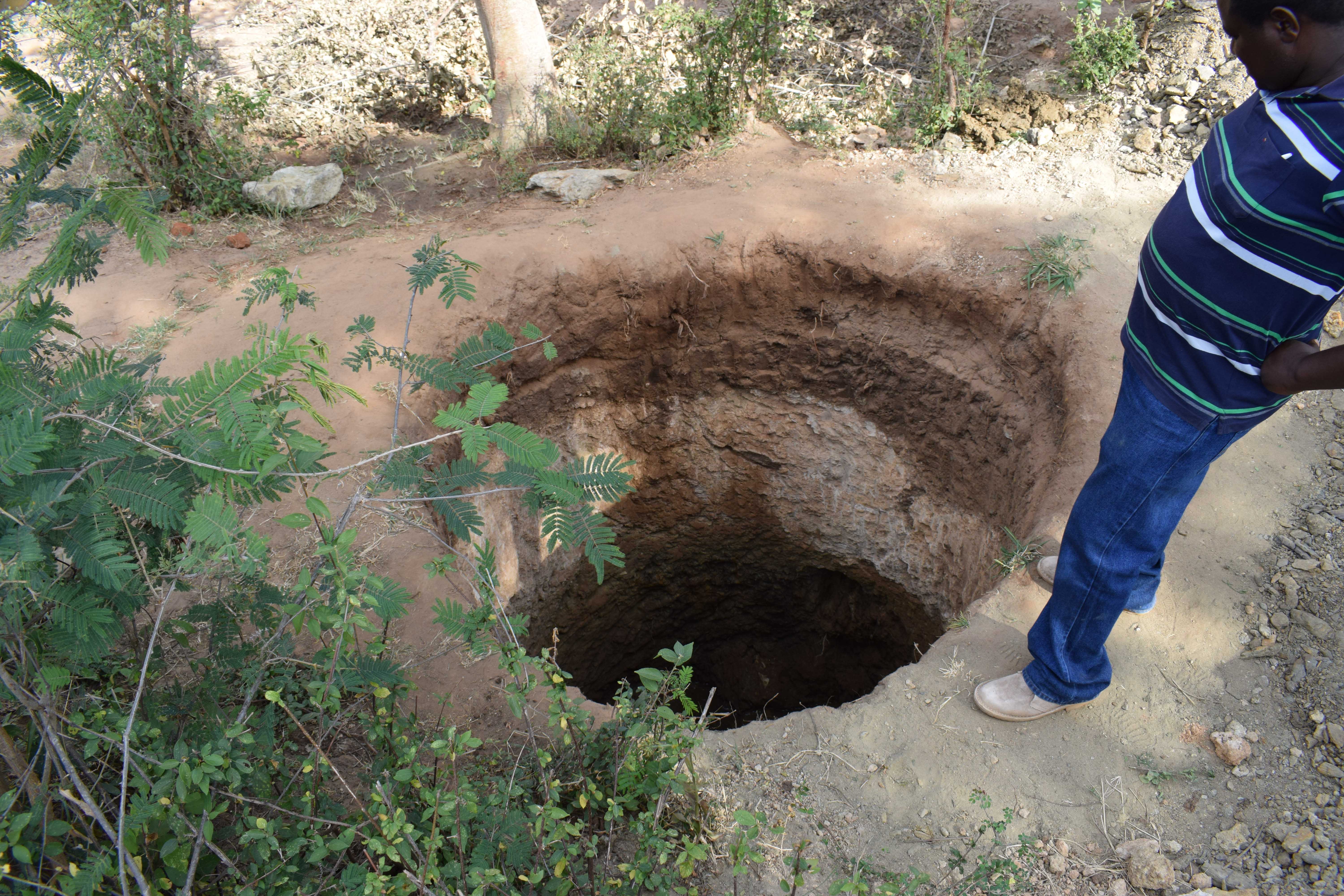This project is a part of our shared program with Africa Sand Dam Foundation. Our team is pleased to directly share the below report (edited for clarity, as needed).
Welcome to the Community
Kithangaini Kithuluni Atui Self-Help Group was formed in the year 2001 with a membership of 60 people, and registered with local government in the same year. Currently, the active members are 45 people who come from Kithangaini Kithuluni Village, which has a population of 8,400 people.
The group’s main objective is to support each other in digging terraces on their farms, constructing gabions, table banking and social welfare. The mean age of members is 52, and the average size of each household is six family members.
As is easily seen in the group’s purpose above, farming is the main source of income here; half of the group is able to earn at least 3,000 shillings a month, while the rest manages a bit more.
Water Situation
Community members always take advantage of the rain when it comes. They put barrels and other plastic containers outside to catch the rain. However, many areas see only one to two large rains during the year.
During the dry months, everyone walks to River Thwake to get the water they need, no matter what the distance.
Water isn’t flowing at this river. People have to dig in the riverbed until they hit water. They fill their 20-liter containers with the water from this hole, and load it onto a donkey or ox-drawn cart. If a family can’t afford a pack animal, they must hoist the heavy container up and carry it all the way home themselves.
This water is open to contaminants from many different sources. Livestock brought back and forth drink freely from the hole, often relieving themselves somewhere along the way. When it rains, even more waste is washed into this water source, not to mention the dirt itself that erodes and muddies the water.
Not only is a lot of time sacrificed to walk to and from the river, but even more time is lost as community members fight illnesses suffered after drinking its dirty water. Rampant waterborne disease is a reality here, with treatment costs diverting substantial family income.
70-year-old Annah Ndeti said, “We know this water might not be safe for drinking, but we do not have an alternative. Some of us boil but most don’t. We therefore need to be taught on different treatment methods to make it safe for drinking.”
Sanitation Situation
100% of group members’ homes have a pit latrine, however rudimentary. Most of them lack doors and only have a curtain hanging there, which can be seen in some of the photos. You find a mixture of permanent and semi-permanent structures depending on the economic status of each household.
Less than half of households have a hand-washing station, and quite a few of these are missing a cleaning agent like soap or ash. Even a handful of households aren’t using dish racks or clotheslines to dry their belongings safely up off the ground.
Plans: Hygiene and Sanitation Training
To address gaps in hygiene and sanitation practices in Kithangaini Kithuluni Community, training will be offered to self-help group members on three consecutive days. The members will learn about useful practices and tools to improve health, and then will be able to share those with their families and neighbors. Water transport, storage, and treatment methods will be taught, and hand-washing will be a focus. Group members will learn how to make their own hand-washing stations with everyday materials. To motivate participants, we must show the links between these activities and their people’s health.
Plans: Hand-Dug Well
This hand-dug well is one of many construction projects taking place to transform this area. We spend a total of five years unified with each community to address their clean water shortage. More sand dams will be built to transform the environment – And as the sand dams mature and build up more sand over time, the water table will rise. To safely access this water, hand-dug wells like this one are installed.
The wells are always located next to sand dams, since they rely on the water stored by sand dams. The sand dam location is proposed by the self-help group and then approved by the technical team. The group always proposes sites that will be central and convenient for every group member to access.
This particular hand-dug well is being built adjacent to this group’s ongoing sand dam project (click here to see). We have supplied the group with the tools needed for excavation. With the guidance of our artisans and mechanics, the excavated well will be cased, sealed with a well pad, and then finished with a new AfriDev pump.
Excavation takes a month or more on average, depending on the nature of the rock beneath. Construction of the well lining and installation of the pump takes 12 days maximum. The well will be lined with a concrete wall with perforations so that once it rains, water will seep in through the sand.

 Protected Dug Well
Protected Dug Well
 Rehabilitation Project
Rehabilitation Project


























